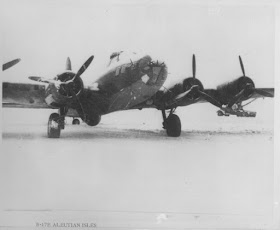36th Bombardment Group
El 36º Grupo de bombardeo (36º BG) fue constituido como unidad de
bombardeo asignándole el 803º Squadron de bombardeo y un Squadron provisional
que estaba ubicado en la base de la RAF de Cheddington. El 36º BG fue una
unidad de guerra electrónica de la 8º Air Force y utilizaron principalmente
cuatrimotores B-24 equipados con aparatos para interferir las comunicaciones
alemanas VHF durante las grandes incursiones diurnas. También realizaron estas
mismas misiones durante los ataques nocturnos de la Royal Air Force Bomber
Command 100 Group de Sculthorpe.
El esfuerzo por establecer un
buen nivel de contramedidas de radar quedó bajo el mando de la RAF dónde
realizaron también algunas operaciones especiales. Entre estas misiones
realizadas se encuentran Window (Chaff), Jostle, Carpet o Mandrel. Muchos de
los sistemas de interferencia fueron desarrollados y probados por los
científicos aliados (norteamericanos e ingleses) asociados al establecimiento
de investigación de telecomunicaciones como la División Laboratorio 15 (ABL-15)
situado en Great Malvern, cerca de Londres. Las operaciones fueron ideadas para
negar a los alemanes una utilización eficaz de sus propios equipos de radio y
radar.
Otras misiones del 36º BG
implicaron engaños para las fuerzas alemanas con Spoofs y de interferencia de
comunicaciones de los carros de combate. Durante la Batalla de las Ardenas
realizaron vuelos a pesar del mal tiempo a pesar de que toda la 8º Air Force se
quedó en tierra. Junto a estas misiones especiales también realizaron algunas
misiones para descubrir las frecuencias utilizadas por los alemanes para sus
dispositivos de radio y radar. Para estas misiones utilizaron también bimotores
P-38 Lightning. Las misiones se prolongaron desde agosto de 1944 hasta el 30 de
abril de 1945 cuando cesó su actividad definitivamente.
Fuentes:
BROWMAN, M. “B-17 Flying Fortress Units of the Eighth Air Force” Osprey, 2002
MAURER, M. “Air Force Combat Units Of World
War II.” Maxwell, 1983
PONS, G. “8th
Air Force: American Heavy Bomber Groups in England 1942-1945” Histoire & Collections, 2006
English version
The 36th Bombardment Group (36th BG) was established as a unit of 803º
Squadron bombing assigning the bombing and provisional Squadron which was
located at the base of RAF Cheddington. The 36th BG was an electronic warfare
unit of the 8th Air Force and used mainly four-engine B-24 equipped with
equipment to jam German communications during major VHF daytime raids. Also
they performed these same missions during night raids of the Royal Air Force
Bomber Command 100 Group of Sculthorpe.
The effort to establish a good level of countermeasures radar came under the command of the RAF where some special operations also performed. These missions are Window (Chaff), Jostle, Carpet or Mandrel. Many jamming systems were developed and tested by scientists allies (US and British) associated with establishing telecommunications research laboratory as 15 (ABL-15) Division located in Great Malvern, near London. The operations were designed to deny the Germans an effective use of its own radio and radar equipment.
The effort to establish a good level of countermeasures radar came under the command of the RAF where some special operations also performed. These missions are Window (Chaff), Jostle, Carpet or Mandrel. Many jamming systems were developed and tested by scientists allies (US and British) associated with establishing telecommunications research laboratory as 15 (ABL-15) Division located in Great Malvern, near London. The operations were designed to deny the Germans an effective use of its own radio and radar equipment.
Other missions of the 36th BG involved deception to German forces Spoofs and interference with communication of the tanks. During the Battle of the Bulge flights performed despite the bad weather even though the whole 8th Air Force was grounded. Alongside these special missions also they conducted several missions to discover the frequencies used by the Germans to their radio and radar devices. For these missions also used twin-engine P-38 Lightning. The mission lasted from August 1944 until April 30, 1945 when it ceased trading altogether.
Sources:
BROWMAN, M. “B-17 Flying Fortress Units of the Eighth Air Force” Osprey, 2002
MAURER, M. “Air Force Combat Units Of World
War II.” Maxwell, 1983
PONS, G. “8th
Air Force: American Heavy Bomber Groups in England 1942-1945” Histoire & Collections, 2006


No hay comentarios:
Publicar un comentario